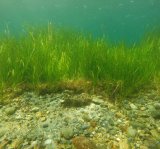Watershed Assessment Research
- National Aquatic Resource Surveys and National Assessment
- Responses of Aquatic Resources to Stressors
- Water Quality Benefits and Modeling
The physical, chemical, and biological integrity of aquatic resources across the United States are threatened by multiple stressors, including climate change. To address these stressors and protect and restore aquatic resources, EPA is advancing research to support monitoring and assessment, characterize responses to cumulative impacts of multiple stressors, and estimate economic benefits of water quality improvements.
By improving EPA’s capabilities for economic valuation and the linkages to water quality improvements, research in this area will provide water resource managers with essential science and tools to advance water quality goals.
National Aquatic Resource Surveys and National Assessment

The National Aquatic Resource Surveys (NARS) program provides a snapshot of the overall condition of our Nation's water resources and changes in their condition over time, allowing a comprehensive understanding of water quality across different regions and ecosystems.
The NARS program is a collaboration between EPA’s Office of Water and Office of Research and Development and is authorized under Clean Water Act (CWA) §104(a), 104(b), 305(b) and 106(a). The program supports the CWA’s objective “to restore and maintain the chemical, physical, and biological integrity of the Nation’s waters” (CWA§101(a)).
Since 2007, EPA has partnered with states and Tribes to conduct annual surveys in which field data and samples associated with chemical, physical, and biological aspects of each sample site are collected. The type of aquatic resource surveyed rotates annually, and the cycle repeats every five years, including the:
- National Lakes Assessment (NLA)
- National Rivers and Streams Assessment (NRSA)
- National Coastal Condition Assessment (NCCA) (including The Great Lakes)
- National Wetland Condition Assessment (NWCA)
In addition to assessing the condition of water resources over time, NARS provides critical information for protecting and restoring water quality. It is the only program in the United States that produces long-term, statistically representative data for aquatic ecosystem condition at regional and national scales. NARS supports both states and Tribes in understanding, monitoring, and improving the quality of their aquatic resources.
Learn more about EPA's National Aquatic Resource Surveys (NARS) research.
Responses of Aquatic Resources to Stressors

EPA research is addressing the need to characterize the responses of aquatic resources to the cumulative impacts of multiple, interacting stressors across space and time.
Scientists are developing indicators, techniques, and methods to assess stressor-response relationships and impacts of multiple stressors, including climate change impacts. This is being done across a range of aquatic resources, including streams, wetlands, coral reefs, submerged aquatic vegetation, and estuaries. Studies on the development and improvements of biological assessment and monitoring tools, data, and applications continue and include case studies at local levels.
Results of this research will empower communities to make informed decisions on restoration and conservation priorities and promote equitable distribution of the resulting benefits.
Related research: EPA scientists assist with National Coastal Condition Assessment intensification survey in Florida’s Pensacola and Perdido Bays
Water Quality Benefits and Modeling

Federal, state, Tribal, and local management actions to improve water quality can lead to a broad range of benefits for communities. EPA’s research is increasing the understanding of benefits associated with different waterbody types and our ability to evaluate climate change and equity issues within a water quality benefits framework.
Gaps being addressed through research:
- Missing or incomplete categories of water quality benefits.
- Current measures and models used for economic valuation can be inconsistent and limited in scale.
- Distributional impacts of water quality benefits, including how water quality changes impact overburdened communities.
Related research: Human Dimensions of Water Quality Research
